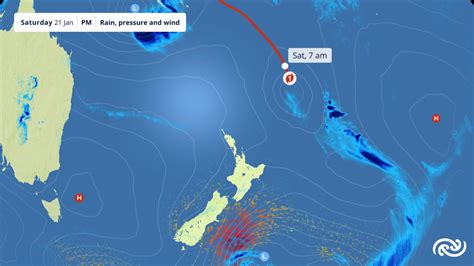Record-breaking rain has pounded Western Australia as Tropical Cyclone Sean wreaked havoc across the state. The Bureau of Meteorology’s meteorologist Angus Hines described the cyclone as “still severe,” emphasizing its potent impact despite moving away from Australia’s mainland.
As the storm continued at a category 3 level, numerous individuals found themselves stranded in floodwaters in Western Australia’s northwest, requiring rescue efforts to ensure their safety. Karratha saw an astonishing 274mm of rainfall within just 24 hours—a historic high for the region. According to Sky News Weather meteorologist Rob Sharpe, this deluge was long overdue for the Pilbara area.
Despite its ferocity, Mr. Hines reassured that Tropical Cyclone Sean would gradually weaken as it followed a southward path along the coastline. While the worst of the storm had passed, flood warnings remained in effect for various regions including Kimberley and Pilbara Districts.
The Department of Fire and Emergency Services (DFES) sprang into action with 37 requests for assistance pouring in predominantly from the Pilbara area—ranging from sandbagging to flood relief efforts. An emergency warning was issued urging residents from Barrow Island to Ningaloo to seek shelter immediately as conditions became too perilous to evacuate safely.
Simultaneously breaking records alongside the cyclone were extreme heat levels experienced in Western Australia. Perth sizzled at a scorching 43.6C on Monday, marking its hottest day in a decade. Further north, Geraldton airport equaled its previous year’s record by hitting a blistering 49.4C.
Mr. Sharpe cautioned that this intense heatwave was far from over, with temperatures expected to remain high until Friday—with Wednesday forecasted to hit 38C in Perth and Thursday soaring up to 39C.
While Western Australia endured these weather extremes, Queensland braced itself for a severe heatwave set to sweep through Brisbane with temperatures projected to peak at 37C on Friday. Southeastern Queensland faced an unprecedented rise of 5-8C above average temperatures—an alarming trend that urged residents to take precautions against dehydration and sun exposure.
Queensland and New South Wales were both put on notice with severe heatwave warnings covering vast areas where residents were advised to stay cool indoors or seek refuge in designated public spaces like libraries or shopping centers due to potential health risks posed by sweltering conditions.
Medical considerations aside—we’ve seen how climate events can upend lives without warning—it underscores our fragile relationship with nature,” commented Dr. Olivia Brooks, an environmental scientist specializing in extreme weather patterns.
**Important Quote:**
“The rainfall itself was quite remarkable.”
With Sydney poised for a scorching high of 34C on Wednesday and Melbourne experiencing a drastic temperature drop from 33C on Tuesday down to 22C on Wednesday—the unpredictable nature of these climatic shifts serves as a stark reminder of our planet’s untamed forces.




Leave feedback about this